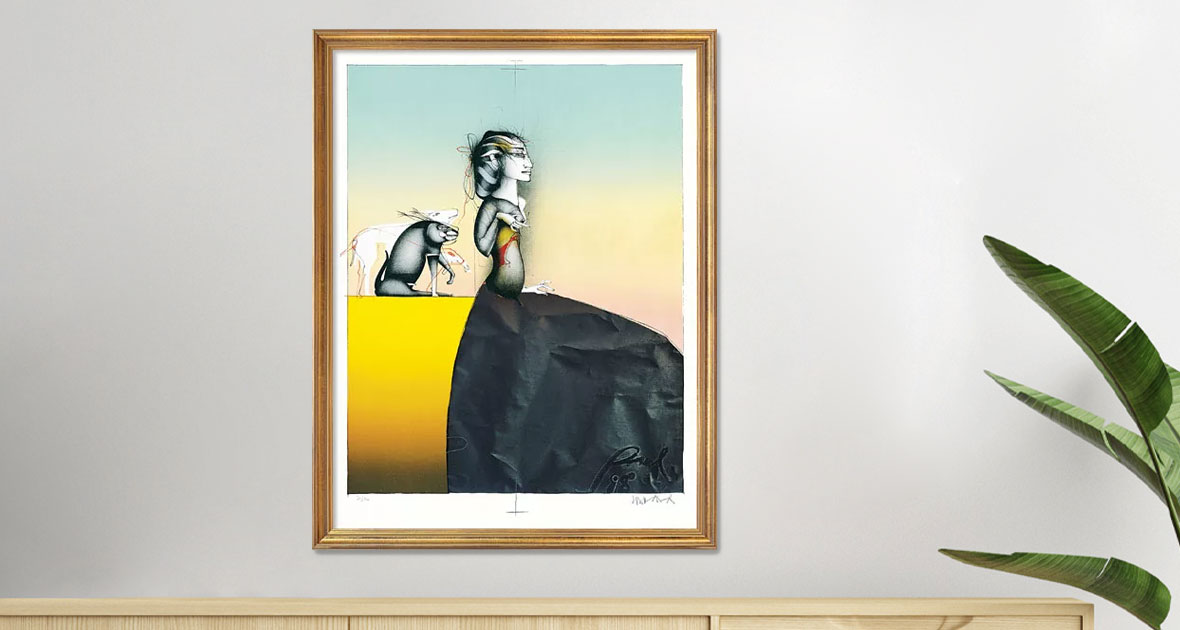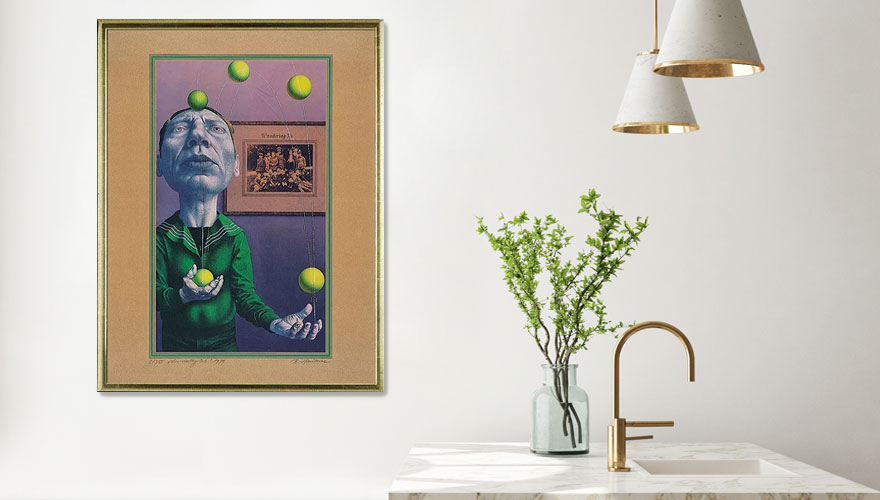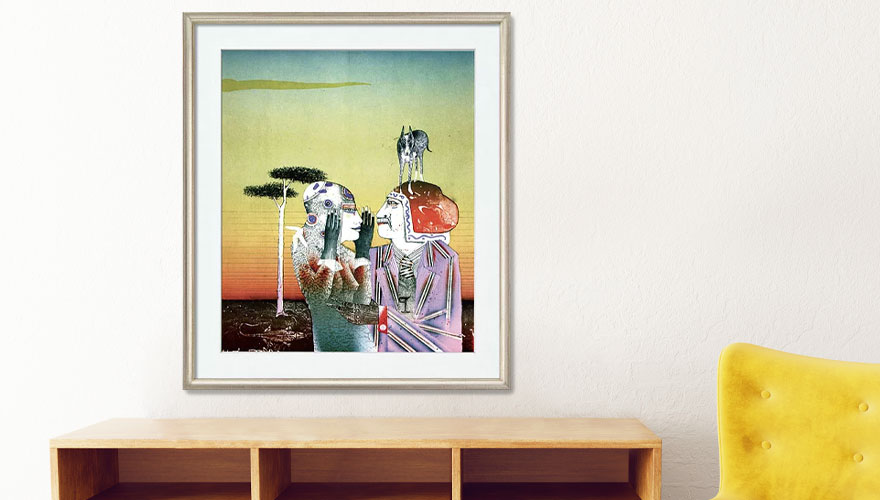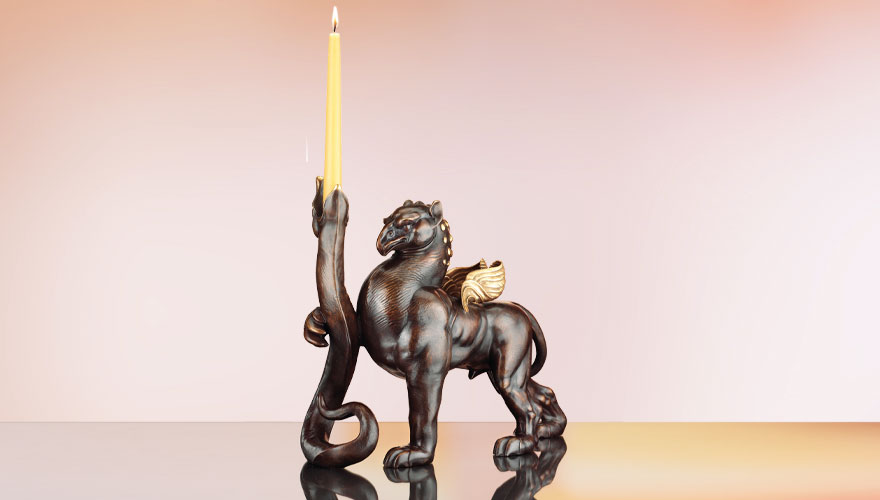
Fantastic Realism: Creating a New Reality
In the middle of the 20th century, a group of young, avant-garde artists gathered in Vienna and gave birth to a new style of painting: Fantastic Realism. These artists did not aim to create mere representations of the world, nor did they follow the increasingly popular trend of abstraction. Instead, they continued to paint figuratively but showed a very individual interpretation of reality. Their art was recognisably influenced by Surrealism but continued to develop towards an independent style. Through surreal, sometimes bizarre pictorial compositions, they presented a fantastical world oscillating between truth, vision, and delusion.
Fantastic Realism: Vienna as the Origin of the Art Movement
The nucleus of the art of Fantastic Realism lay in Austria. In the mid-1940s, the "Vienna School of Fantastic Realism" was formed in the capital. Among its first members were Arik Brauer, Ernst Fuchs, Rudolf Hausner, Wolfgang Hutter and Anton Lehmden.
Two other prominent painters also played a significant role in the emergence of Fantastic Realism: Edgar Jené and Albert Paris Gütersloh. The latter taught as a professor at the Vienna Academy of Fine Arts from 1945 to 1962. His students included many of the later representatives of the art movement. In addition to his teaching, he was president of the "Art Club" in Vienna. Here, young avant-garde artists of all genres and styles exchanged ideas and initiated joint exhibitions.
Edgar Jené, originally from the Saarland, Germany, also had a significant influence on the Viennese School of Fantastic Realism. He promoted Surrealism in Vienna after the Second World War and organised the first exhibitions, becoming a significant figure of identification for the artists of Fantastic Realism.
The young artists also held their first major exhibition in Vienna in 1959. Displaying their works at the Belvedere, they caused a sensation with their fantastic figurative style. This was followed by further exhibitions in Austria and abroad. Today, Fantastic Realism is regarded as one of the most internationally successful art movements from Austria.

In Search of True Reality
The artists of Fantastic Realism refused to perceive reality as a given and merely depict it. Instead, they aimed to use their art to look beyond the outer appearance of the world. The pictures were intended to reveal hidden secrets and provide access to the truth.
Ernst Fuchs (1930 - 2015) viewed painting as an imagery through which he could explore the deepest secrets of his soul and contemporary events. He searched for what was not immediately recognisable in the outer shells of the world. For him, painting was a kind of "awake dreaming". Arik Brauer (1929 - 2021) did not want to paint things as they appeared but rather what they truly represented. He aimed to show the world with all its positive and negative facets.
While the artists of Fantastic Realism shared a fundamental similarity with Surrealism in their basic approach. Their works also appear fantastic, dreamlike, and unreal. However, the decisive difference between the two styles lies in their painting process. The surrealists drew inspiration from the free imagination, the subconscious, and the unconscious. They experimented with intuitive and automated painting methods to gain access to the depths of their psyche, aiming to express the artistic impulse on canvas as unfiltered as possible. Some even went so far as to want to silence conscious thought altogether.
In contrast, the artists of Fantastic Realism fundamentally rejected this impulsive approach to painting. They developed clear concepts for their paintings and executed them on canvas in a controlled manner. Instead of painting intuitively and spontaneously, they placed great emphasis on technically perfect execution with a great richness of detail. In doing so, they also distanced themselves from abstraction, which began its rise to fame in the 1950s: They insisted on the representational, they posed a direct challenge to the art establishment, which was celebrating abstract painting at the time.

Fantastic Realism: Characteristics and Motifs of Painting
The painting style of Fantastic Realism did not develop completely independently but was influenced by previous epochs. The impetus came from various other styles such as Magical Realism, Mannerism and the Old Masters of the Middle Ages, the Renaissance, and the Baroque.
However, the most significant source of inspiration was certainly Surrealism. Particularly in terms of pictorial themes, the proximity to the surrealists was evident. The fantastic realists did not paint naturalistic depictions of the world either. Instead, they presented unreal scenes blending the dreamlike, the real, the mystical and the supernatural. They drew their inspiration from emotions and the personal inner life, as well as from writings such as the Bible, ancient myths, and fantastic tales.
The range of motifs extended from beguilingly beautiful pseudo-landscapes and erotic fantasies to apocalyptic scenes, animals, and mythical creatures. While the Fantastic Realists remained committed to figuration, they distorted their motifs to the point of grotesqueness and absurdity. Occasionally, the exaggerated style of depiction also led to subtle irony. Despite the bizarre and twisted nature of the pictorial objects, the artists of Fantastic Realism always attached great importance to a technically and artistically high-quality execution, with objects depicted in great detail.

Fantastic Painting Produced Successful Artists
For some members, the "Vienna School of Fantastic Realism" was a springboard to a great career: Ernst Fuchs, for instance, was considered the universal genius of the group. His oeuvre included not only painting and graphic art but also sculpture, stage design, architecture, music, and poetry. He enjoyed a high reputation among his peers due to his great talent. Even Salvador Dalí, the figurehead of Surrealism, admired him, reportedly describing him as the "Dalí of the Germans". Ernst Fuchs exhibited his works worldwide and received numerous public honours. The world's largest collection of his works is now on display in the "Ernst Fuchs Museum" in Vienna, which he established during his lifetime.
Another member of the Fantastic Realism School was the painter Rudolf Hausner. In 1959, he showcased his works at documenta II, followed by numerous exhibitions at home and abroad. He was appointed professor at both the University of Fine Arts in Hamburg and the Academy of Fine Arts in Vienna. Hausner received several prizes and awards, including the Burda Prize for Painting in Munich and the Austrian State Prize for Painting.
In Germany, too, Fantastic Realism found followers. One of its best-known representatives was the painter, graphic artist, and sculptor Paul Wunderlich. His work was honoured internationally with prizes, for example, in Germany, France and Italy. He taught as a professor at the Hamburg University of Fine Arts and was awarded the Order of Merit of the Federal Republic of Germany in 1997. His exhibition activities took him around the world, including to Minneapolis, Paris, Tokyo, and Brussels, and he was also invited to documenta III.
The art of Fantastic Realism has not produced an iconic work that would represent this style of painting today - such as "Adele Bloch-Bauer I" by Gustav Klimt for Art Nouveau or "Der Blaue Reiter" by Franz Marc for Expressionism. But the public continues to be fascinated by the fantastical bizarre and often highly decorative works. Exhibitions of this style are still regularly held and remain immensely popular.
